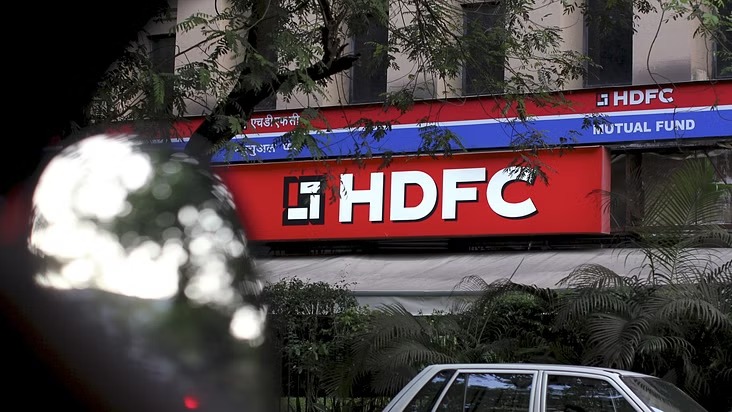HDFC’s Last Attempt to Secure ₹2000 Crore Before HDFC Bank Merger.
HDFC is actively negotiating the sale of these debts with asset reconstruction businesses.

HDFC is making the last efforts to sell stressed loans worth approximately 2,000 crores issued to developers before its merger with the bank it originated three decades ago. HDFC has earlier asked bidders to submit bids for either the entire pool or specific accounts. The portfolio for sale has a 600 crore loan for Ghaziabad’s Radisson Blu hotel and 595 crores for 6-7 other real estate developer loans in other locations.

HDFC is actively negotiating the sale of these debts with asset reconstruction businesses. A consulting firm, Alvarez & Marsal, is aggressively seeking new loan purchasers. According to one of the people, the merger is expected to be done by next quarter, i.e., the merger is likely to go into effect in July. According to Care Edge Ratings, the combined business would have total advances of more than 22 lakh crore and a net value of more than 3 lakh crores as of December 31, 2022.
Some loans may have NPAs.
According to the person with knowledge, the loan portfolio is around Rs 2,000 crore, while HDFC continues to include or omit some loans from this pool. Some loans may contain NPA, while others may be stressed but have not been officially acknowledged as NPAs.
HDFC highlighted multiple accounts for potential sale in March but did not move to owe to lower-than-expected recovery prospects. According to the above sources, it sold just ₹ 150 crores in bad loans, exposing Matoshree Developers to Omkara ARC.

Omkara paid Rs 50 crore for Matoshree Developers’ outstanding debts totalling Rs 150 crore, representing a 33% recovery for HDFC. During the earlier quarter, HDFC received an offer from Omkara ARC for around INR 1,100 crore in pooled stressed assets. However, the bid value fell short of the mortgage lender’s expectations, resulting in the sale being cancelled.
Assets Care and Reconstruction Enterprise purchased developer loans twice in FY23 for about 50% of the loan amount. They paid INR 270 crore against a total loan of Rs 577 crore for a 47% recovery in the Q1 of FY23 and Rs 602 crore for a Rs 1,180-crore loan pool for a 51% recovery in Q3.
HDFC’s asset quality has improved in recent quarters, with individual GNPA (Gross Non-Performing Assets) falling from 0.99% to 0.75% as of March 31, 2023. Individual GNPA fell from 4.76% to 2.9%. The restructured pool represented 0.6% of assets under management (AUM), compared to 0.8% in 2022.
In preparation for the predicted merger with HDFC Bank, HDFC has decreased certain non-individual risks. Non-individual loans continued to fall, owing mainly to the repayment of earlier facilities, resolutions, and a decrease in some merger-related liabilities.

How does HDFC benefit?
The most significant advantage for HDFC will be access to diverse low-cost finance and a large HDFC Bank Ltd customer base. Previously, non-banking financial businesses had regulatory arbitrage relative to banks, but regulatory authorities have harmonised the same, necessitating this merger and establishing a competitive edge over its counterparts.
How does HDFC Bank benefit?
HDFC Bank will be able to expand its housing loan portfolio due to the planned merger. The housing loan market is on the verge of a substantial upswing, with tailwinds for the real estate industry. It offers a stable, secured asset class with handsome risk-adjusted returns. This will encourage the merging entity’s balance sheet size, allowing it to underwrite high-ticket-size loans.
The combined entity may be included in the MSCI Index.
Robust solid expansion in the infrastructure industry, particularly in the housing sector, will be advantageous. Furthermore, cross-selling items will boost economic credit expansion, benefiting the extensive client base. There is also a chance that the combined business will be included in the MSCI INDEX. Currently, HDFC Bank’s holding is deemed FII; however, after the merger, the stake will be lowered, which will aid in possible inclusion.
Conclusion.
The envisioned merger would generate significant value for stakeholders, including shareholders, customers, and employees. The merged entity would benefit from increased scale, a more comprehensive product offering, balance-sheet resiliency, and the ability to drive synergies across revenue opportunities. Overall, this is a match made in heaven, resulting in a larger size, a complete product offering, balance-sheet robustness, and the capacity to develop synergies across revenue prospects, operational savings, and underwriting efficiencies, all of which benefit both firms’ stakeholders.
Proofread & Published By Naveenika Chauhan




